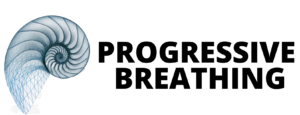Detoxification Benefits from Applying Nasal Breathing Practices
Incorporating nasal breathing practices into your daily routine can significantly enhance your body’s detoxification processes. This simple yet effective practice offers numerous benefits for overall health and well-being, primarily through its impact on the respiratory, circulatory, and lymphatic systems.
Firstly, nasal breathing filters and purifies the air you inhale. The nasal passages are lined with tiny hairs called cilia and a layer of mucus, which work together to trap dust, allergens, and pathogens. By breathing through your nose, you ensure that the air reaching your lungs is cleaner and less contaminated, reducing the burden on your respiratory system and allowing it to function more efficiently.
Moreover, nasal breathing promotes better oxygen exchange. When you breathe through your nose, the air passes through the nasal cavities, where it is warmed and humidified. This process facilitates optimal oxygen uptake in the lungs, which is crucial for cellular metabolism and energy production. Efficient oxygenation supports the body’s ability to remove metabolic waste products, a key aspect of detoxification.
Nitric Oxide Production
In addition, nasal breathing stimulates the production of nitric oxide, a powerful molecule with various health benefits. Nitric oxide helps dilate blood vessels, improving blood flow and circulation. Enhanced circulation ensures that oxygen and nutrients are delivered more effectively to tissues and organs, while waste products are more efficiently removed. This improved blood flow supports the liver and kidneys, the primary organs responsible for detoxification.
Transitioning to nasal breathing can also activate the diaphragm more effectively. Diaphragmatic breathing, which involves deep breaths using the diaphragm, enhances lymphatic flow. The lymphatic system plays a critical role in detoxification by transporting waste products and toxins away from tissues and into the bloodstream, where they can be eliminated. Improved lymphatic flow reduces the risk of lymphatic congestion and supports overall detoxification.
Furthermore, nasal breathing helps regulate the autonomic nervous system. By activating the parasympathetic nervous system, nasal breathing induces a relaxation response, counteracting the stress-induced activation of the sympathetic nervous system. Stress can impair detoxification processes, so promoting relaxation through nasal breathing supports the body’s natural detoxification pathways.
Progressive Breathing Applications
Integrating nasal breathing practices into your daily routine can be simple. Techniques such as mindful breathing, yoga, or meditation can help you develop and maintain effective nasal breathing habits. By focusing on nasal breathing, you can enhance your body’s ability to detoxify and improve your overall health.
In conclusion, nasal breathing offers substantial detoxification benefits. By filtering and purifying inhaled air, promoting better oxygen exchange, stimulating nitric oxide production, enhancing lymphatic flow, and regulating the nervous system, nasal breathing supports the body’s natural detoxification processes.
Are you ready to experience the detoxification benefits of nasal breathing for yourself?
Try some samples of Nasal Breathing Practices with Progressive Breathing.
Align Movement with Nasal Breathing for Optimal Health Benefits.



